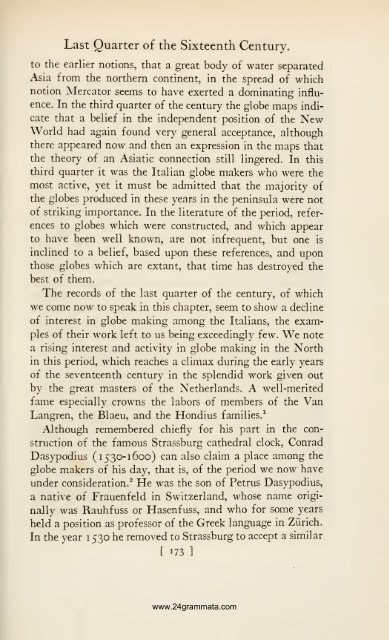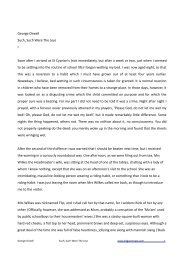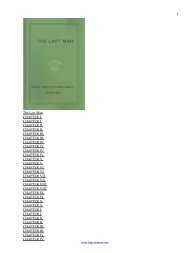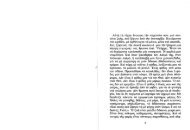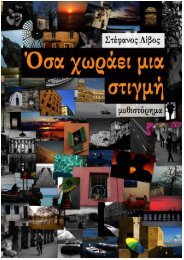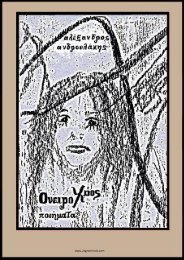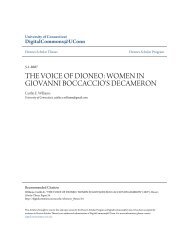- Page 1 and 2:
www.24grammata.com
- Page 3 and 4:
www.24grammata.com
- Page 5 and 6:
TERRESTRIAL AND CELESTIAL GLOBES ww
- Page 7 and 8:
PUBLICATIONS OF THE HISPANIC SOCIET
- Page 9 and 10:
www.24grammata.com
- Page 11 and 12:
TEKRESTRiAi a:.^] lAL %. . ? 1 * <
- Page 13 and 14:
TERRESTRIAL AND CELESTIAL GLOBES TH
- Page 15 and 16:
AFFECTIONATELY DEDICATED TO MY WIFE
- Page 17 and 18:
List of Illustrations Foreword Tabl
- Page 19 and 20:
Chapter Table of Contents. VIII : G
- Page 21 and 22:
List of Illustrations Frontispiece.
- Page 23 and 24:
FIG. List of Illustrations. 32. Glo
- Page 25 and 26:
List of Illustrations. FIG. CHAPTER
- Page 27 and 28:
HITHERTO Foreword. there has not ap
- Page 29 and 30:
Foreword. those which may be called
- Page 31 and 32:
Foreword. trial globes, were constr
- Page 33 and 34:
Foreword. est and scientific value
- Page 35 and 36:
Chapter I Terrestrial Globes in Ant
- Page 37 and 38:
Terrestrial Globes in Antiquity. fe
- Page 39 and 40:
www.24grammata.com £ o Ph CO
- Page 41 and 42:
Terrestrial Globes in Antiquity. th
- Page 43 and 44:
mm I'Mpilwiilliiiii liiiiniliii^^ F
- Page 45 and 46:
Terrestrial Globes in Antiquity. mo
- Page 47 and 48:
Terrestrial Globes in Antiquity. bu
- Page 49 and 50:
Terrestrial Globes in Antiquity. sa
- Page 51 and 52:
Terrestrial Globes in Antiquity. 22
- Page 53 and 54:
Fig. 7. Atlante Farnese, ca, 200 B.
- Page 55 and 56:
Celestial Globes in Antiquity. glob
- Page 57 and 58:
* fii/a/i/f-JE QhiriL'Sobhtujr lim
- Page 59 and 60:
Celestial Globes in Antiquity. Lact
- Page 61 and 62:
Celestial Globes in Antiquity. inte
- Page 63 and 64:
Fig. 9. Armillary Sphere according
- Page 65 and 66:
Celestial Globes in Antiquity. tors
- Page 67 and 68:
Fig. 10. Bosco Reale Roman Fresco,
- Page 69 and 70:
Celestial Globes in Antiquity. cipa
- Page 71 and 72:
Celestial Globes in Antiquity. 18.
- Page 73 and 74:
Globes Constructed by the Arabs. ce
- Page 75 and 76:
Fig. 13. Northern Hemisphere of Glo
- Page 77 and 78:
^^Vnmgwttg (PfifiqKmmom^ cum cntoce
- Page 79 and 80:
Globes Constructed by the Arabs. in
- Page 81 and 82:
Fig. 14. Globe of Mohammed ben Muwa
- Page 83 and 84:
Globes Constructed by the Arabs. is
- Page 85 and 86:
Globes Constructed by the Arabs. NO
- Page 87 and 88:
Fig. 15. Globe of Diemat Eddin Moha
- Page 89 and 90:
www.24grammata.com CO o '.2 O s
- Page 91 and 92:
Chapter IV Terrestrial and Celestia
- Page 93 and 94:
Globes in the Christian Middle Ages
- Page 95 and 96:
Fig. 18. Hereford World Map, ca. 12
- Page 97 and 98:
Fig. 19. The Earth Pictured as a Sp
- Page 99 and 100:
Globes in the Christian Middle Ages
- Page 101 and 102:
Globes in the Christian Middle Ages
- Page 103 and 104:
"^'.-T^T'. Fig. 20. The Constellati
- Page 105 and 106:
Globes in the Christian Middle Ages
- Page 107 and 108:
Globes in the Christian Middle Ages
- Page 109 and 110:
Fig. 21. Globe of Martin Behaim, 14
- Page 111 and 112:
Early Years of Great Geographical D
- Page 113 and 114:
3-Kirt'^^ Sy /• Fig. 22. Portrait
- Page 115 and 116:
Early Years of Great Geographical D
- Page 117 and 118:
VBftvlta(V»saaaa 04 \^< S '- .- :
- Page 119 and 120:
Early Years of Great Geographical D
- Page 121 and 122:
Fig. 24. Lorenzo Lotto Portrait of
- Page 123 and 124:
Early Years of Great Geographical D
- Page 125 and 126:
Fig. 25. Portrait of Sebastian Cabo
- Page 127 and 128:
Early Years of Great Geographical D
- Page 129 and 130:
Early Years of Great Geographical D
- Page 131 and 132:
Chapter VI Globes of the Early Sixt
- Page 133 and 134:
Globes of the Early Sixteenth Centu
- Page 135 and 136:
Fig. 28. Holbein's Ambassadors, ca.
- Page 137 and 138:
Globes of the Early Sixteenth Centu
- Page 139 and 140:
i,V^^XN^S www.24grammata.com
- Page 141 and 142:
Globes of the Early Sixteenth Centu
- Page 143 and 144:
www.24grammata.com bJO o U dCO bio
- Page 145 and 146:
Globes of the Early Sixteenth Centu
- Page 147 and 148:
www.24grammata.com o p a
- Page 149 and 150:
Globes of the Early Sixteenth Centu
- Page 151 and 152:
www.24grammata.com V o a; S rt '13
- Page 153 and 154:
Globes of the Early Sixteenth Centu
- Page 155 and 156:
Fig. 34. Lenox Globe, 1510. Fig. 35
- Page 157 and 158:
Globes of the Early Sixteenth Centu
- Page 159 and 160:
Fig. 36. Jagellonicus Globe, 1510.
- Page 161 and 162:
Globes of the Early Sixteenth Centu
- Page 163 and 164:
Fig. 38. The Green Globe, 1515. www
- Page 165 and 166:
Globes of the Early Sixteenth Centu
- Page 167 and 168:
Fig. 39. Liechtenstein Globe Gores,
- Page 169 and 170:
Globes of the Early Sixteenth Centu
- Page 171 and 172:
www.24grammata.com GO bJD o o o 5 H
- Page 173 and 174:
Globes of the Early Sixteenth Centu
- Page 175 and 176:
Fig. 41. Portrait of Magellan. www.
- Page 177 and 178:
Globes of the Early Sixteenth Centu
- Page 179 and 180:
. y ^ .^ I «/4i«k i# «4iiik««i
- Page 181 and 182:
Globes of the Early Sixteenth Centu
- Page 183 and 184:
Fig. 44. Western Hemisphere of Joha
- Page 185 and 186:
Globes of the Early Sixteenth Centu
- Page 187 and 188:
www.24grammata.com o CO
- Page 189 and 190:
\ rW^" „£. \' "^r «* '--. ^~^-
- Page 191 and 192:
Globes of the Early Sixteenth Centu
- Page 193 and 194:
Globes of the Early Sixteenth Centu
- Page 195 and 196:
Globes of the Early Sixteenth Centu
- Page 197 and 198:
Second Quarter of the Sixteenth Cen
- Page 199 and 200:
Second Quarter of the Sixteenth Cen
- Page 201 and 202:
-i>V", fcif^ *''^^w—^—-^ Fig. 4
- Page 203 and 204:
Second Quarter of the Sixteenth Cen
- Page 205 and 206:
www.24grammata.com c
- Page 207 and 208:
Second Quarter of the Sixteenth Cen
- Page 209 and 210:
\^-. i^i^'M^Pifc www.24grammata.com
- Page 211 and 212:
Second Quarter of the Sixteenth Cen
- Page 213 and 214:
Fig. 51. Portrait of Gemma Frisius.
- Page 215 and 216:
Second Quarter of the Sixteenth Cen
- Page 217 and 218:
Second Quarter of the Sixteenth Cen
- Page 219 and 220:
Fig* 53- Terrestrial Globe of Rober
- Page 221 and 222:
Second Quarter of the Sixteenth Cen
- Page 223 and 224:
Fig. 54. Schoner's Terrestrial Glob
- Page 225 and 226:
Second Quarter of the Sixteenth Cen
- Page 227 and 228:
Fig. 54a. Schoner's Celestial Globe
- Page 229 and 230:
Second Quarter of the Sixteenth Cen
- Page 231 and 232:
Fig. ^^. Paris Wooden Globe, 1535.
- Page 233 and 234:
Second Quarter of the Sixteenth Cen
- Page 235 and 236:
Fig. 56. Vopel Globe, 1543. www.24g
- Page 237 and 238:
Second Quarter of the Sixteenth Cen
- Page 239 and 240:
Fig. 57. Terrestrial Globe of Euphr
- Page 241 and 242:
Second Quarter of the Sixteenth Cen
- Page 243 and 244:
Second Quarter of the Sixteenth Cen
- Page 245 and 246:
www.24grammata.com ?>ss^j3gj;! N 3
- Page 247 and 248:
Second Quarter of the Sixteenth Cen
- Page 249 and 250:
www.24grammata.com 2 O X 3 O -a o '
- Page 251 and 252:
Second Quarter of the Sixteenth Cen
- Page 253 and 254:
Second Quarter of the Sixteenth Cen
- Page 255 and 256:
,^r--f.'^. mt www.24grammata.com ir
- Page 257 and 258:
Second Quarter of the Sixteenth Cen
- Page 259 and 260:
Second Quarter of the Sixteenth Cen
- Page 261 and 262:
Second Quarter of the Sixteenth Cen
- Page 263 and 264:
Fig. 62. Terrestrial Globe of Gerha
- Page 265 and 266: Second Quarter of the Sixteenth Cen
- Page 267 and 268: Second Quarter of the Sixteenth Cen
- Page 269 and 270: Second Quarter of the Sixteenth Cen
- Page 271 and 272: Second Quarter of the Sixteenth Cen
- Page 273 and 274: Second Quarter of the Sixteenth Cen
- Page 275 and 276: Second Quarter of the Sixteenth Cen
- Page 277 and 278: Third Quarter of the Sixteenth Cent
- Page 279 and 280: www.24grammata.com C tUD G O -a o C
- Page 281 and 282: Third Quarter of the Sixteenth Cent
- Page 283 and 284: www.24grammata.com C d o ii TS o 03
- Page 285 and 286: www.24grammata.com c
- Page 287 and 288: Third Quarter of the Sixteenth Cent
- Page 289 and 290: www.24grammata.com c o CO o 4-1 c
- Page 291 and 292: Third Quarter of the Sixteenth Cent
- Page 293 and 294: Third Quarter of the Sixteenth Cent
- Page 295 and 296: Fig. 67. Globe of Christian Heyden,
- Page 297 and 298: Third Quarter of the Sixteenth Cent
- Page 299 and 300: Fig. 68. Globe of Johannes Praetori
- Page 301 and 302: Third Quarter of the Sixteenth Cent
- Page 303 and 304: Third Quarter of the Sixteenth Cent
- Page 305 and 306: Third Quarter of the Sixteenth Cent
- Page 307 and 308: Third Quarter of the Sixteenth Cent
- Page 309 and 310: Third Quarter of the Sixteenth Cent
- Page 311 and 312: Fig. 69. Terrestrial Globe of Mario
- Page 313 and 314: Third Quarter of the Sixteenth Cent
- Page 315: Third Quarter of the Sixteenth Cent
- Page 319 and 320: Fig. 70. Strassburg Clock and Globe
- Page 321 and 322: Last Quarter of the Sixteenth Centu
- Page 323 and 324: Fig. 71. Portrait of Peter Apianus.
- Page 325 and 326: Last Quarter of the Sixteenth Centu
- Page 327 and 328: Fig. 72. Globes of Philip Apianus,
- Page 329 and 330: Last Quarter of the Sixteenth Centu
- Page 331 and 332: Fig. 73. Silver-Gilt Globe of Gerha
- Page 333 and 334: Last Quarter of the Sixteenth Centu
- Page 335 and 336: Fig. 74. Globe of George Roll and J
- Page 337 and 338: Last Quarter of the Sixteenth Centu
- Page 339 and 340: TYcao E:iiAi[E lyfc! -t^ .>ifaZ
- Page 341 and 342: Last Quarter of the Sixteenth Centu
- Page 343 and 344: Fig. 76. Interior of Tycho Brahe's
- Page 345 and 346: Last Quarter of the Sixteenth Centu
- Page 347 and 348: GLOBVS MAGNVS ORL C H A L C 1 C U S
- Page 349 and 350: Last Quarter of the Sixteenth Centu
- Page 351 and 352: Fig. 78. T.'Ecuy Terrestrial Globe,
- Page 353 and 354: Last Quarter of the Sixteenth Centu
- Page 355 and 356: Fig. 79. Terrestrial Globe of Emery
- Page 357 and 358: Last Quarter of the Sixteenth Centu
- Page 359 and 360: Last Quarter of the Sixteenth Centu
- Page 361 and 362: Last Quarter of the Sixteenth Centu
- Page 363 and 364: Fig. 80. Anonymous Terrestrial Glob
- Page 365 and 366: Last Quarter of the Sixteenth Centu
- Page 367 and 368:
^^^1 www.24grammata.com
- Page 369 and 370:
Fig. 82. Gold Globe-Goblet, ca. 157
- Page 371 and 372:
Last Quarter of the Sixteenth Centu
- Page 373 and 374:
Fig. 83. Ivory Terrestrial Globe of
- Page 375 and 376:
Last Quarter of the Sixteenth Centu
- Page 377 and 378:
Fig. 84. South Polar Region on Glob
- Page 379 and 380:
Last Quarter of the Sixteenth Centu
- Page 381 and 382:
Last Quarter of the Sixteenth Centu
- Page 383 and 384:
Fig. 85. Terrestrial Globe of \'an
- Page 385 and 386:
Last Quarter of the Sixteenth Centu
- Page 387 and 388:
Last Quarter of the Sixteenth Centu
- Page 389 and 390:
Last Quarter of the Sixteenth Centu
- Page 391 and 392:
Fig. 86. Armillary Sphere of Antoni
- Page 393 and 394:
Last Quarter of the Sixteenth Centu
- Page 395 and 396:
Fig. 87. Celestial Globe of B. F.,
- Page 397 and 398:
Last Quarter of the Sixteenth Centu
- Page 399 and 400:
www.24grammata.com
- Page 401 and 402:
www.24grammata.com


